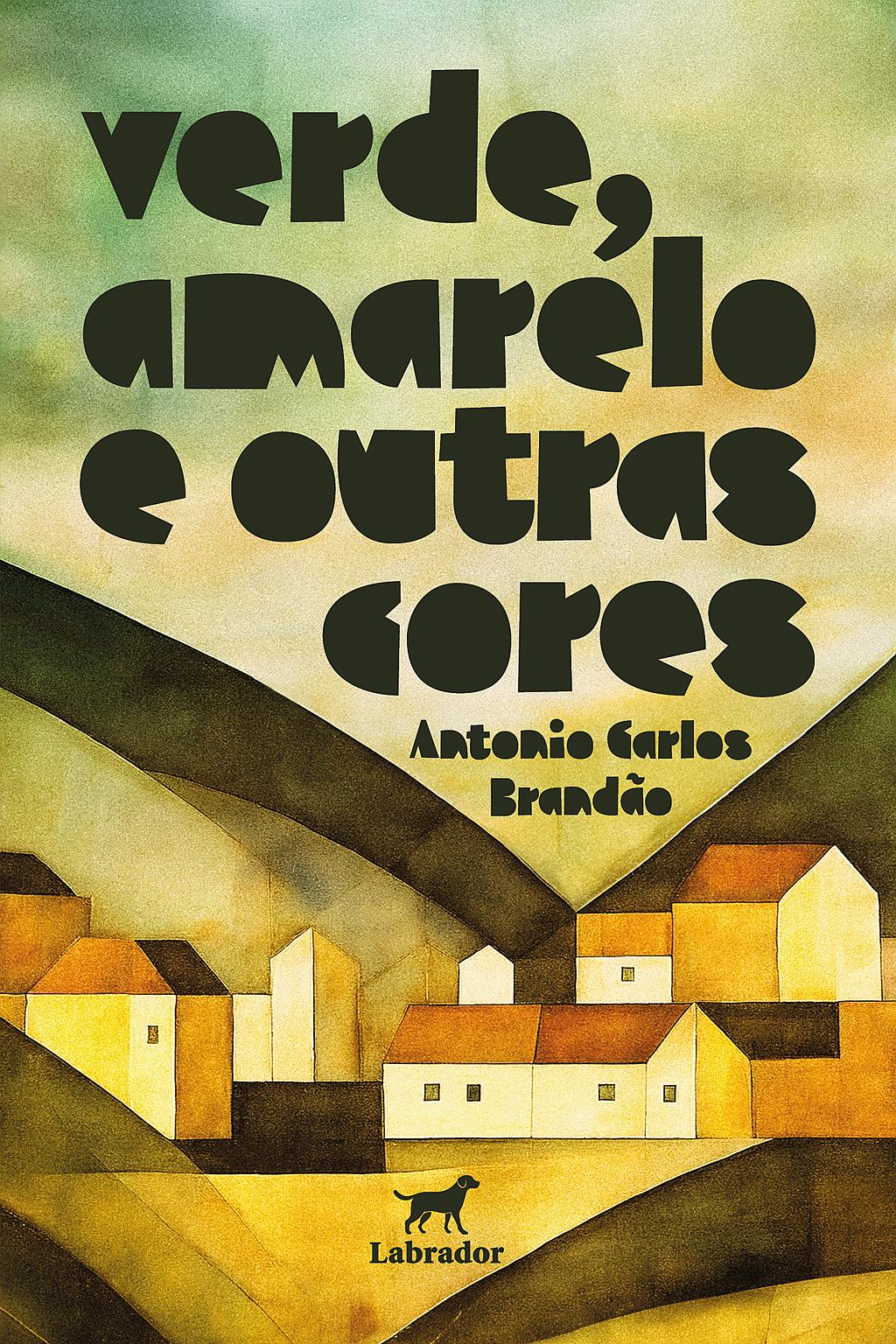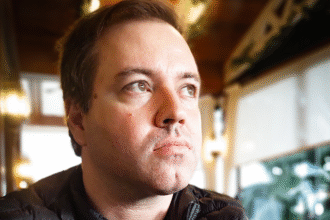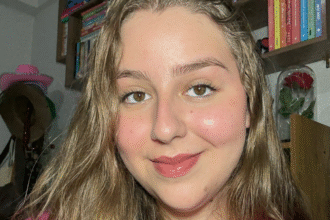In Verde, Amarelo e outras cores, Antonio Carlos Brandão recalls the memories of Nova Ilusão, a utopian city that tried to live up to the ideals of equality, liberty and fraternity of the French Revolution in the interior of Brazil. Through the reflections of the character Frei Barbudo, the last survivor of the village, the work delves into the impacts of colonialism and the search for a more just and peaceful world. Influenced by magical realism and a profound philosophical approach, the book explores timeless human dilemmas, uniting philosophy, science and religion in a thought-provoking narrative.
New Illusion was a dream that existed for a while, but eventually succumbed to external forces. Do you believe that a utopia like this could actually sustain itself in today’s world? What would it take for it to survive?
No. I believe that for a utopia of this format to exist, very profound changes would be needed in societies. Starting with religious, political and social concepts. I believe that the most difficult would be the religious ones. They are so intensely involved in society that it would be impossible in any of the Abrahamic religions, such as Judaism, Christianity or Islam, or even in the others.
Friar Barbudo is the last survivor of a village that tried to live in a fair and egalitarian way. What was the inspiration for creating this character and how does he reflect the central ideas of the book?
Your questions are formidable. Friar Barbudo existed. He was a friar, therefore, not ordained, and he had a large black beard. He had taken a vow of chastity and poverty. My Italian grandmother had a habit of giving everyone nicknames, and she started calling him Barbudo. I found out that he had chosen the name Arcanjo. He was from the Basilica Minor of Aparecida here in Rio Preto and was responsible for the upkeep of the church. He was also the one who made the hosts. Before being consecrated, these could be eaten, and my brother and I, when we were 8 and 4 years old, would go to church with my grandmother, since we lived nearby, and my brother would ask the friar for “potatoes”, which were the hosts. That is why we liked him so much, so I thought of paying homage to him. And his dog “Filé” was a dog of mine who I had a lot of affection for.
The book combines philosophy, science and religion in a narrative that questions fundamental concepts of society. What was the research process like to balance these complex themes within the plot?
Yes. It took four years of research into religion, philosophy, indigenous peoples and Africans. The biggest challenge was how to bring it all together in the form of a novel, rather than as research on texts that had already been extensively researched. This research involved reading classics of philosophy, as well as university dissertations. Regarding history, in addition to classic books, I looked at historians of romance such as Barbara Tuchman , Arnold Toynbee and several others who are called philosophers of history. The solution to everything I researched, after many attempts, was magical realism and a closed space to develop the drama, in this case, New Illusion. The idea of including Bambolino , which was timeless, was to explain something about religion, history and science, but with a greater focus on complicated human relationships.
Magical realism is a powerful tool for exploring social and philosophical issues. How did this approach help build the atmosphere of Green, Yellow and Other Colors?
In this style, I managed to mix the two worlds we live in. A tangible, verifiable world, and another imaginable one, where we think about the future, the soul, heaven or hell, and where religions take us and survive. It seems that, in the Upper Paleolithic period, signs of funeral rituals were found. From then on, man began to think about the afterlife. The gods appeared and the Greeks tried to define it with concepts of soul and spirit. I believe that, in everyday life, these two worlds are inseparable: thinking about the future, about love, about family and always about death, which I believe is fundamental for humans. And the other “side of life” is what keeps religions going, all of them. The promises of the other side and forgiveness from a God that the intermediaries believe they represent. In this way, I describe phenomena that would not be possible with any other style.

The arrival of the circus represents a turning point in the story of Nova Ilusão. What does this event symbolize within the narrative and what kind of reflections do you hope to provoke in the reader?
The arrival of the traveling circus put an end to isolation. Then the Official Brazil began to emerge. The Real Brazil and the Official Brazil were mentioned in a lecture by Ariano Suassuna, but he says that it was Machado de Assis who first used the term. And these terms are now being used again, I believe in most countries. Without isolation from foreign cultures, religious and philosophical theories, it is easier to maintain utopia. This concept can be seen in Voltaire, when in Candide he makes ironic remarks about the European conquerors.
The utopian city welcomed figures from different backgrounds and backgrounds. How does each of the characters – Feliciano Firmino, Tião Ekundayo , Maria do Rosário and Frei Barbudo – contribute to the worldview that the book proposes?
The idea is to show that different races and social conditions can coexist very well side by side, and, regardless of gender or social status, we can find individuals with great wisdom. At this point, I define in the book that intelligence is the ability to change nature, such as extracting minerals and building various artifacts or even cutting down a tree and making a beautiful door. Or worse: inventing the atomic bomb . And wisdom is knowing whether this is good or not.
The work contains references to great thinkers such as Spinoza, Pythagoras, Voltaire and Socrates. How do these philosophers interact with the reality of Nova Ilusão and with contemporary issues?
Only Spinoza can dialogue with the concepts of life in New Illusion. The others are cited to show that, for our people of Real Brazil and with the human nature that we have, philosophical digressions matter little. Perhaps Voltaire can also do this, because he was ironic about the conquerors. Regarding the contemporary issue, the perception remains that nothing has changed since the great Greek thinkers.
The book questions the way society deals with concepts such as power, progress and development. In your opinion, what can we learn from Nova Ilusão about these topics?
The idea is that we should stop inventing what I call useless science, like AI, or spending fortunes to go get rocks from the moon. Whenever man invents something about stellar travel, the thought comes to mind: let’s find out how the universe was formed. Why? We have to take care of our own home first. However, I, who have done research, always came across this answer: We can’t stop science. I agree, but what science?
Connection with nature is a central aspect of the book’s philosophy. Do you believe that reclaiming this relationship could be the key to solving some of today’s dilemmas?
Without a doubt, there is a Xerente legend that says: “The Sun god, “ Waptokwá ”, which they call “ Waptokwa Zawre (our great father) is the father of all indigenous people. In the beginning, when Bdâ and Wairê (Sun and Moon) were together looking at creation, Bdâ took a small buriti stalk and threw it into the water. The buriti stalk sank and immediately came back to the surface. Then Bdâ said: “Our children will die and soon come back to life.” Wairê did not agree, because that way they would increase too much on Earth, and there would not be enough game for everyone, and they would eat each other. So, taking a stone, he threw it into the water. The stone sank and never came back to the surface. The Xerente say that, if it were not like this, today they would not be crying over the death of their past beings. For them, the Xerente, “everything has life.” Man, animals, stones, trees, water and all of nature communicate with each other. I put it in my book: let us live with nature and not destroy it.
Despite the end of Nova Ilusão, its memory still resonates in the book and in the voice of Frei Barbudo. In the real world, what are the signs that there is still room for the construction of new utopias?
The great hope is the youth. My generation has ruined everything. However, we need to teach them what wisdom is and the difference between intelligence and not enthusiasm for technology or the desire to go to another planet. A popular parable, whose origin I do not know, tells a story. “A group of indigenous people had their region burned by fire. So, when they went out to hunt, they found only roasted animals, but they ate them anyway and liked them. So, from time to time, they would set fire to the forest and then go and get the already roasted animals. Until a smarter one got some wood and put an animal to roast and explained: “See, there is no need to set fire to the forest.” To which the chief replied: “But what am I going to do with the person who sets the fire, with the person who puts out the fire, with the person who goes to get the animals and with the person who plants the trees?” So what would we do with so many people who live off intelligence that is not wisdom?
Follow Antonio Carlos Brandão on Instagram





